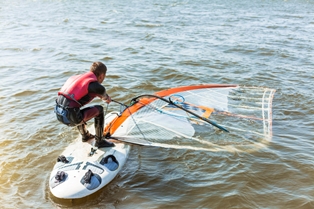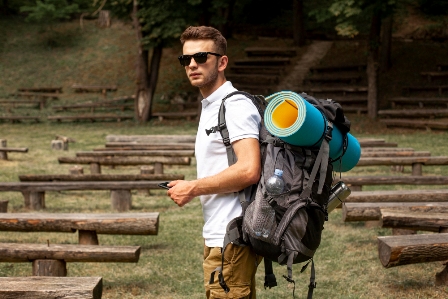Rafting is a thrilling outdoor activity that combines adventure, teamwork, and a deep connection with nature. Whether navigating the rapids of a wild river or enjoying a leisurely float down a calm stream, rafting requires not only skill but also the right equipment. Among the essential gear for a successful rafting trip is the rafting cargo sling, a vital accessory often overlooked by beginners. This article delves into the significance, uses, and best practices associated with the rafting cargo sling, focusing on its role in managing the back of the boat.
What is a Rafting Cargo Sling?
A rafting cargo sling is a specialized piece of equipment used to secure gear and supplies on a raft. Typically made from durable materials like nylon webbing or polyester, these slings are designed to withstand the harsh conditions of whitewater rafting. The primary function of a cargo sling is to keep all gear safely attached to the raft, preventing loss during turbulent sections of the river and ensuring that everything is easily accessible when needed.
The Importance of the Back of the Boat in Rafting
In rafting, the back of the boat (also known as the stern) plays a crucial role in the overall balance and maneuverability of the raft. The guide, who steers and directs the raft, often sits at the back, which makes it an essential spot for securing critical gear and equipment. Properly managing the cargo at the back of the boat is vital for maintaining stability, especially in rough waters. The cargo sling ensures that this area remains organized, with gear securely fastened and distributed evenly to avoid tipping or destabilizing the raft.
Types of Rafting Cargo Slings
There are several types of cargo slings available, each designed to meet specific needs and conditions. Understanding the different types of slings is crucial for selecting the right one for your rafting expedition.
- Webbing Slings:
These are made from durable, woven fabric, typically nylon or polyester. Webbing slings are known for their strength and flexibility, making them ideal for securing a wide range of gear. They are also resistant to water and UV damage, ensuring long-lasting performance.
- Round Slings:
Constructed from high-strength synthetic fibers, round slings offer superior load-bearing capacity. Their circular design allows for even distribution of pressure, reducing the risk of damage to the gear and the raft. Round slings are often used for heavier loads or in situations where gear needs to be secured tightly.
- Chain Slings:
While less common in rafting, chain slings are extremely durable and can handle the heaviest loads. They are typically used in industrial applications but can be useful in rafting scenarios where maximum strength is required. However, due to their weight and potential for rust, they are not the first choice for most rafters.
- Wire Rope Slings:
These slings are made from steel cables and are incredibly strong. Wire rope slings are used in extreme conditions where other types of slings might fail. However, they are heavier and less flexible, which can be a drawback in some rafting situations.
Key Features of a Rafting Cargo Sling
- Durability and Strength:
Rafting cargo slings are designed to handle the rigors of outdoor water sports. They are made from high-strength materials that resist wear, tear, and UV damage, ensuring longevity even in challenging environments.
- Adjustability:
Most cargo slings are adjustable, allowing them to accommodate different sizes and types of gear. This flexibility is crucial for rafting trips where space and weight distribution are critical.
- Quick-Release Buckles:
In the event of an emergency, quick-release buckles allow for fast detachment of gear. This feature is essential for safety, as it enables the rapid unloading of the raft if it capsizes or becomes trapped.
- Water Resistance:
Given the nature of rafting, it’s important that cargo slings are water-resistant. This not only helps in keeping gear dry but also prevents the sling itself from absorbing water, which could add unnecessary weight and reduce its effectiveness.
How to Properly Use a Rafting Cargo Sling
- Planning and Packing:
Before setting off on a rafting trip, carefully plan what gear needs to be secured. Heavy items should be placed at the bottom, with lighter, more frequently accessed items on top. This helps maintain a low center of gravity, which is crucial for stability.
- Securing the Sling:
Attach the cargo sling to the D-rings or other secure points on the raft. Ensure that the sling is tight enough to hold the gear in place but not so tight that it puts undue strain on the raft’s structure.
- Regular Checks:
Throughout the trip, periodically check the cargo sling to ensure it remains secure. Adjust the tension as necessary, especially after passing through rapids or rough water.
- Balancing the Load:
Distribute the weight evenly across the back of the boat to avoid unbalancing the raft. A well-balanced load is easier to steer and less likely to capsize.
Maintenance and Care of Rafting Cargo Slings
To ensure the longevity and effectiveness of your cargo slings, regular maintenance is crucial. Here are some tips for maintaining your slings:
- Cleaning:
After each trip, clean the slings with fresh water to remove dirt, sand, and other debris. This helps prevent wear and tear, as well as damage from saltwater exposure.
- Inspection:
Regularly inspect the slings for signs of wear, such as fraying, cuts, or damage to the stitching. If any issues are found, replace the sling immediately to avoid potential failure during use.
- Storage:
Store your slings in a cool, dry place away from direct sunlight. UV rays can weaken the material over time, reducing the sling’s strength and durability.
- Proper Handling:
Avoid dragging slings on rough surfaces or exposing them to sharp objects, which can cause damage. Handle them with care to ensure they remain in good condition.
Advanced Techniques for Using Cargo Slings
For seasoned rafters, advanced techniques for using cargo slings can further enhance safety and efficiency. Here are some tips:
- Multiple Slings:
In situations where a single sling may not suffice, using multiple slings can provide added security. This is particularly useful when securing large or oddly-shaped items.
- Knots and Ties:
Mastering different types of knots and ties can improve the effectiveness of your slings. For example, using a bowline knot or double fisherman’s knot can provide additional security for your gear.
- Tensioning Devices:
In some cases, using tensioning devices such as ratchets or pulleys can help tighten the slings more effectively, ensuring that the gear is securely fastened.
FAQs About Rafting Cargo Sling Back of Boat
Regularly check the tension of the sling and the condition of the buckles throughout the trip, especially after passing through rapids or rough waters. Adjust as necessary to keep the gear secure and the raft balanced.
A rafting cargo sling is a piece of equipment used to secure gear and supplies on a raft, particularly at the back of the boat. It’s important because it ensures that all gear remains safely attached during the trip, preventing loss or shifting that could destabilize the raft.
When loading gear, consider the weight distribution and accessibility. Heavy items should be placed at the bottom, and lighter or more frequently used items on top. Make sure the load is balanced to maintain the raft’s stability.
After each trip, rinse the cargo sling with fresh water to remove any dirt, sand, or salt that could degrade the material. Check for wear and tear, particularly around the buckles and stitching. Store it in a cool, dry place out of direct sunlight.
Conclusion
The rafting cargo sling is an indispensable tool for anyone serious about rafting. It ensures that your gear is safe, your raft is balanced, and your trip is as smooth and enjoyable as possible. Understanding how to use and maintain a cargo sling can make a significant difference in your rafting experience, enhancing both safety and efficiency. Whether you’re a novice or an experienced rafter, investing in a quality cargo sling is a step towards more successful and enjoyable adventures on the water.





